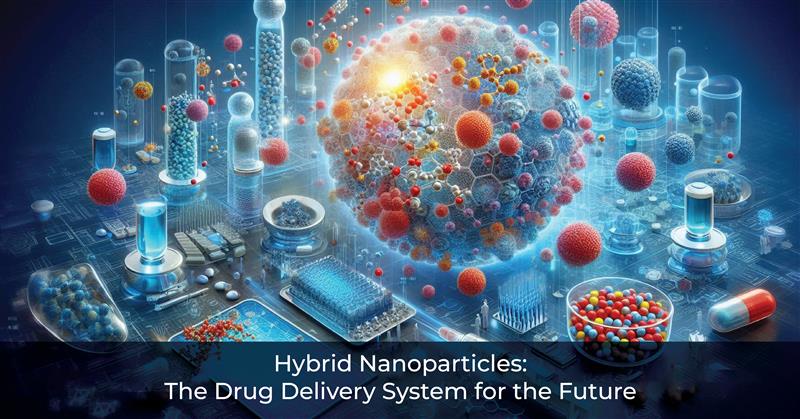Advantages of Hybrid Nanoparticles in Drug Delivery
Better bioavailability of drugs is one of the key advantages of hybrid nanoparticles in drug delivery. Drugs generally considered to have poor bioavailability, a major concern in drug delivery, are hydrophobic drugs with poor water solubility. These hybrid nanoparticles encapsulate such drugs in their shells, presenting them to the body with better solubility and, hence, better absorption. Further, targeting ligands that recognize cell types, such as cancerous cells, can be attached to the surface of the nanoparticle in order to ensure delivery of the drug precisely to the desired cell.
It can also regulate drug delivery. Some hybrid nanoparticles have the ability to trigger the release of their cargo by being either pH-responsive, temperature-responsive, or sensitive to enzymatic activity. In such cases, this release-on-demand mechanism is likely to be very beneficial for chemotherapy. To give a high dose of toxic drugs at the site of the tumor while sparing healthy tissue requires quite the opposite criteria in this line of treatment.
Recent advances in microfluidic technologies have significantly contributed to the synthesis of hybrid nanoparticles. Microfluidics allows high control over the mixing of materials to yield nanoparticles that are both uniform in size and composition. In line with this, within the same order of variation, it enables a high reproducibility of hybrid nanoparticles with tunability, which is key to attaining a clinically translatable scale.
One of the most striking developments in this regard is the invention of lipid-polymer hybrid nanoparticles. They combine the stability and drug-carrying capacity of polymers with the biocompatibility and targeting ability of lipids. A layer of lipids on their surface protects not only the polymeric core of the nanoparticles but also provides the means for attaching targeting ligands that enhance the specificity of drug delivery.
Yet another way of utilizing quantum dots is in hybrid nanoparticles. Quantum dots are very small, effectively a small-sized semiconductor particle with a couple of unique optical properties; one of them is fluorescence, which can be used for imaging. Researchers used a multifunctional system by loading quantum with hybrid nanoparticles, thereby achieving drug delivery in the body and tracking the drug’s distribution at the site of interest by imaging. This ability is highly useful in cancer treatment, and the localization and efficiency of the therapy are very desirable.
Therapeutic Applications in Cancer
Hybrid nanoparticles have excellent possibilities for therapeutic applications in cancer. Most of the major problems in cancer chemotherapy are directly or indirectly related to the loss of selective drug uptake in a tumor, which leads to severe side effects. Hybrids avoid this problem and serve as carriers for good drug delivery. For instance, engineering lipid-polymer hybrid nanoparticles to deliver chemotherapy drugs specifically to tumor cells might reduce side effects on healthy tissues. The lipid layer can be modified with ligands that interact with receptors overexpressed on the cancer cells, ensuring that the nanoparticles preferentially accumulate in the tumor.
Besides targeted delivery, hybrid nanoparticles can be designed for combination therapy, where two or more drugs are delivered in a single system. This is particularly suitable in the treatment of cancer, when multiple drugs act by different mechanisms to achieve an overall therapeutic effect. Hybrid nanoparticles can load several drugs into their layers or compartments to be sure that each drug release occurs at the correct time and location.
A photo-thermal therapy application is particularly promising, for example, through the use of hybrid nanoparticles that can convert light into heat and, in turn, kill cancer cells. An example of an efficient absorber of light that, in turn, produces heat is gold nanoparticles. Constructing the gold nanoparticles in a hybrid setting with a polymeric drug carrier will have a mode of administration of the chemotherapy drug with a way of locally heating the target to increase the effectiveness of the treatment.
